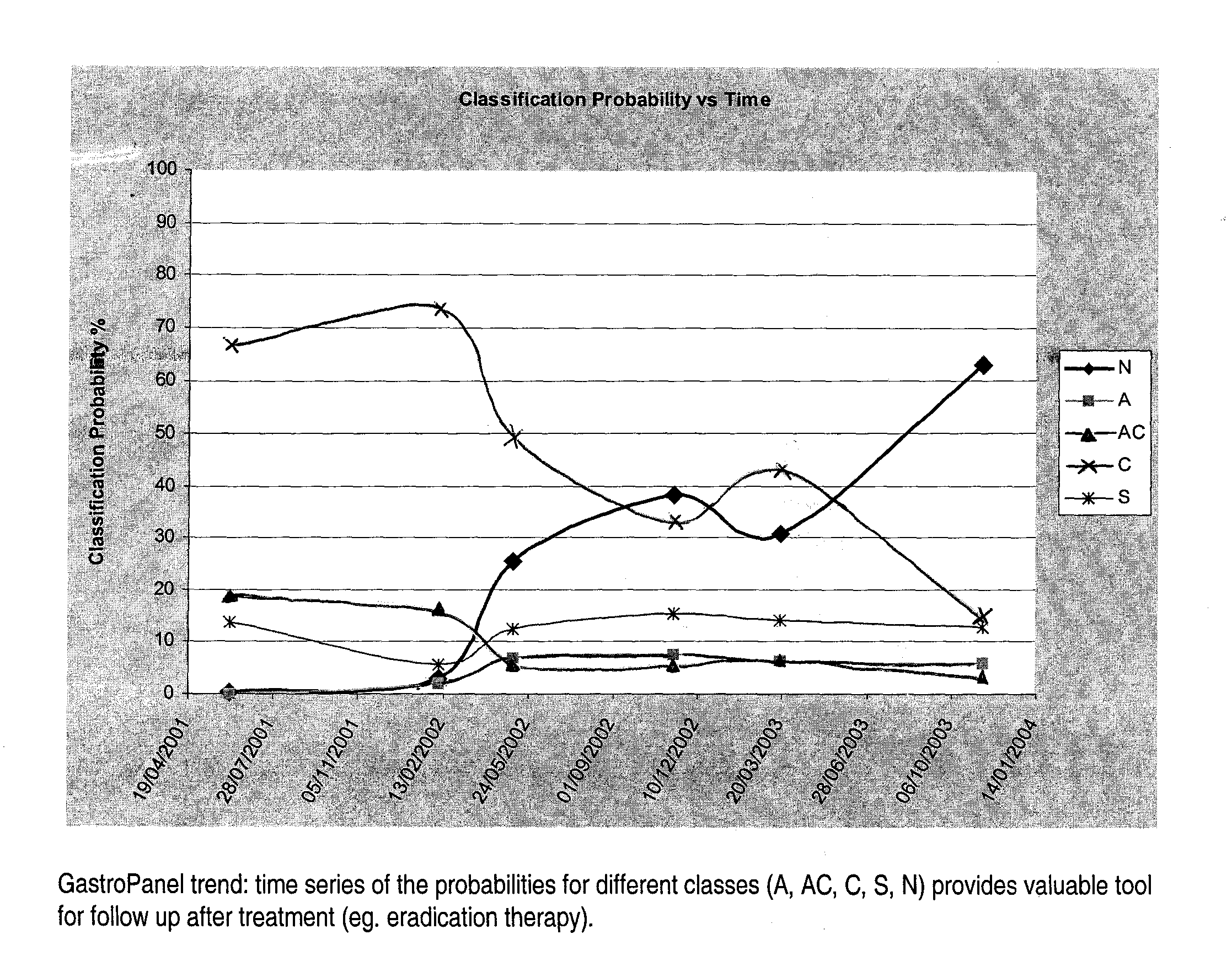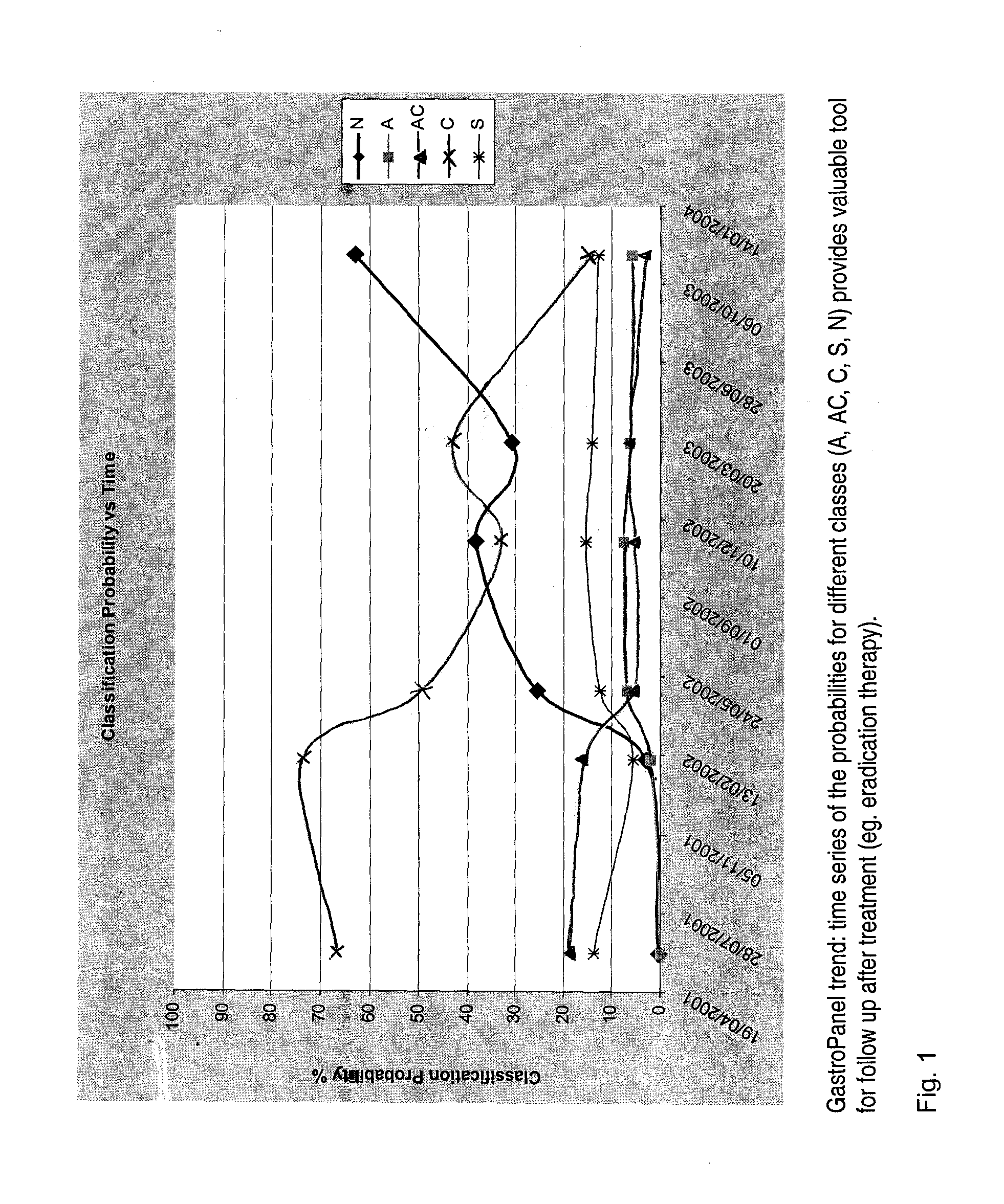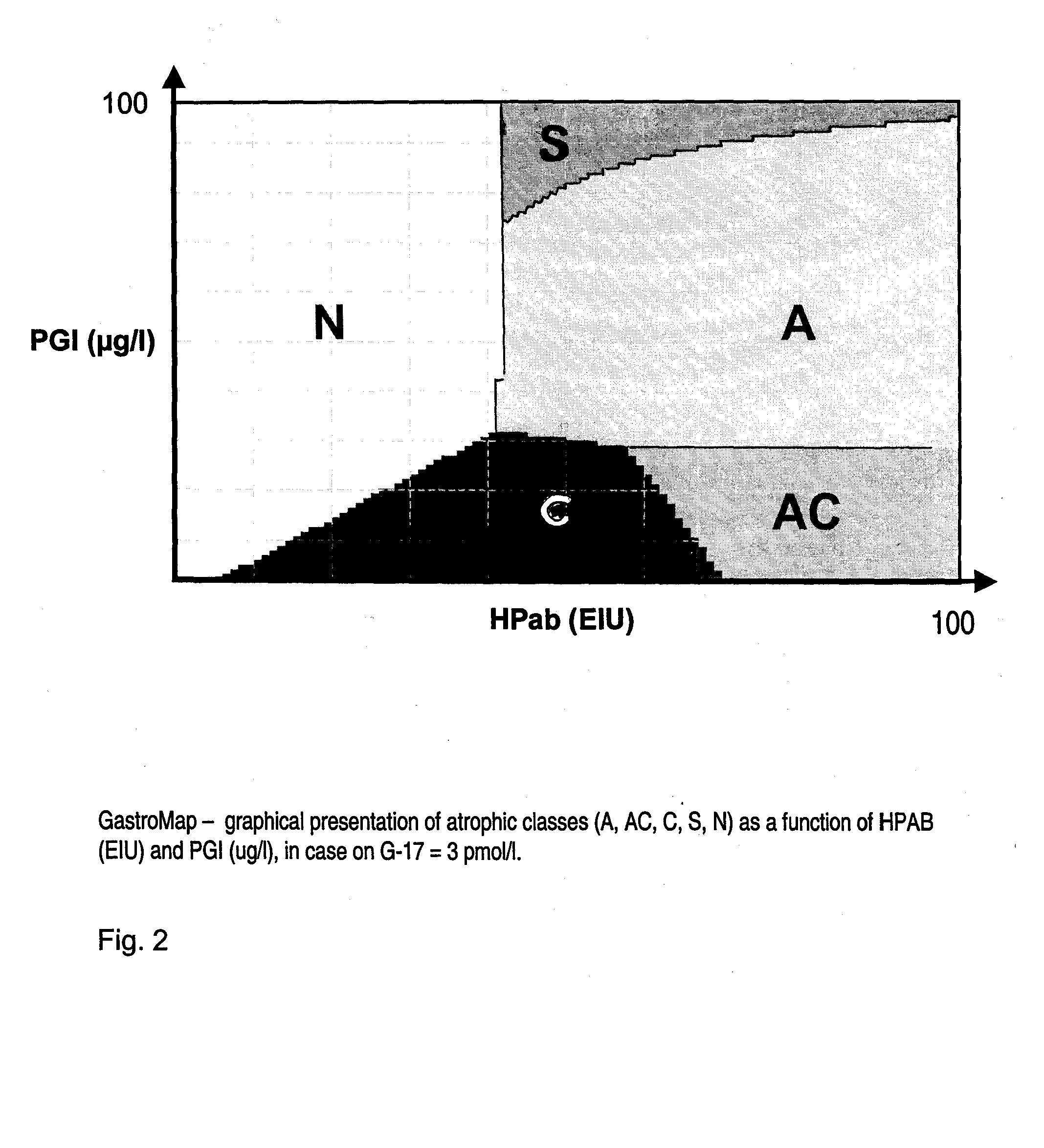Method for Predicting the State of the Gastric Mucosa
a gastric mucosa and state prediction technology, applied in the field of gastric mucosa state prediction, can solve the problems of delayed patient's treatment, poor gastric cancer prognosis, and inconvenient diagnosis and treatment,
- Summary
- Abstract
- Description
- Claims
- Application Information
AI Technical Summary
Problems solved by technology
Method used
Image
Examples
example 1
[0049]The following analyte concentrations were measured from a sample of a patient.
Pepsinogen I7μg / lGastrin-17 (post pr.)49.9pmol / lH. pylori lgG:156EIU
[0050]Based on the concentrations determined, the following probabilities were calculated.
Probabilities:
[0051]
NORMAL0.2%ANTRUM ATROPHY0%ANTRUM AND CORPUS ATROPHY19%CORPUS ATROPHY66.7%NON-ATROPHIC GASTRITIS13.8%
[0052]Based on the calculated probabilities a diagnosis of atrophic corpus gastritis is suggested. Such a diagnosis is associated with:[0053]1. Increased risk of gastric cancer (risk factor 5×).[0054]2. Peptic ulcer disease (duodenal or gastric) is unlikely.[0055]3. Helicobacter pylori infection.
example 2
[0056]The following analyte concentrations were measured from a sample of a patient.
Pepsinogen I87μg / lGastrin-170.3pmol / lH. pylori lgG:12EIU
[0057]Based on the concentrations determined, the following probabilities were calculated.
Probabilities:
[0058]
NORMAL84.5%ANTRUM ATROPHY6.2%ANTRUM AND CORPUS ATROPHY0%CORPUS ATROPHY0.1%NON-ATROPHIC GASTRITIS8.9%
[0059]Based on the calculated probabilities a diagnosis of a normal mucosa is suggested. Such a diagnosis is associated with:[0060]1. Very low risk of gastric cancer.[0061]2. Very low risk of peptic ulcer.[0062]3. No Helicobacter pylori infection.
example 3
[0063]The following analyte concentrations were measured from a sample of a patient.
Pepsinogen I7μg / lPepsinogen II3μg / l (PGI / PGII: 2.3)Gastrin-1720pmol / lH. pylori lgG:48EIU
[0064]Based on the concentrations determined, the following probabilities were calculated.
Probabilities:
[0065]
NORMAL2.6%ANTRUM ATROPHY1.9%ANTRUM AND CORPUS ATROPHY16.1%CORPUS ATROPHY73.5%NON-ATROPHIC GASTRITIS5.6%
[0066]Based on the calculated probabilities a diagnosis of atrophic corpus gastritis is suggested. Such a diagnosis is associated with:[0067]1. Increased risk of gastric cancer (risk factor 5×).[0068]2. Peptic ulcer disease (duodenal or gastric) is unlikely.[0069]3. Helicobacter pylori infection.
PUM
 Login to View More
Login to View More Abstract
Description
Claims
Application Information
 Login to View More
Login to View More - R&D
- Intellectual Property
- Life Sciences
- Materials
- Tech Scout
- Unparalleled Data Quality
- Higher Quality Content
- 60% Fewer Hallucinations
Browse by: Latest US Patents, China's latest patents, Technical Efficacy Thesaurus, Application Domain, Technology Topic, Popular Technical Reports.
© 2025 PatSnap. All rights reserved.Legal|Privacy policy|Modern Slavery Act Transparency Statement|Sitemap|About US| Contact US: help@patsnap.com



